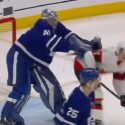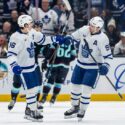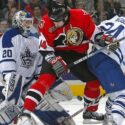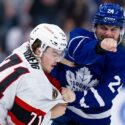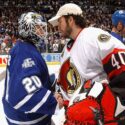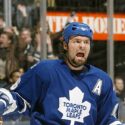TORONTO (Mar. 14) — In the days before otherwise–rational human beings were scared to leave their homes for food — yet had toilet paper piled to the ceiling — there was hockey. Stanley Cup hockey, to be precise. The variety of which may not occur in the squeamish spring of 2020. With all of North American professional sport mothballed in deference to COVID–19, it may be cathartic to step back in time. Forty–four years in time… yet not–so–seemingly long ago for adherents of the Toronto Maple Leafs that remember coach Red Kelly; players Darryl Sittler, Lanny McDonald, Errol Thompson, Dave (Tiger) Williams, Borje Salming, Ian Turnbull, and the group that restored credibility to the franchise after a decade of tribulation.
It was the spring of 1976. Three months before the Summer Olympics in Montreal. One year prior to Major League Baseball arriving in Toronto. Nine years after the Leafs had won their most–recent National Hockey League championship. Clarence Campbell still presided over the NHL and the Toronto Argonauts of the Canadian Football League were about to draw the largest outdoor audience in our country’s history (to that time)… for a Blue vs. White intrasquad game. It’s true. The team that today struggles to attract 15,000 spectators for regular–season matches enticed nearly 44,000 souls to the newly expanded Exhibition Stadium on June 21, 1976. It was the Double Blue debut of running back Anthony Davis, the University of Southern California phenom lured north of the border by Argos owner Bill Hodgson. The previous outdoor record in Canada was 38,102 — for the 1960 Grey Cup game at Empire Stadium in Vancouver. But, I digress.
In 1975–76, the NHL was comprised of 18 teams. Adams Division: Boston Bruins, Buffalo Sabres, California Golden Seals, Toronto Maple Leafs. Norris Division: Detroit Red Wings, Los Angeles Kings, Pittsburgh Penguins, Montreal Canadiens, Washington Capitals. Patrick Division: Atlanta Flames, New York Islanders, New York Rangers, Philadelphia Flyers. Smythe Division: Chicago Blackhawks, Kansas City Scouts, Minnesota North Stars, St. Louis Blues, Vancouver Canucks. Twelve teams qualified for the Stanley Cup tournament. The four Division winners (Boston, Montreal, Philadelphia, Chicago) received a buy into the quarterfinals. The next eight teams, in order of points, squared off in a best–of–three preliminary round — 1 vs. 8, 2 vs. 7, 3 vs. 6 and 4 vs. 5 — with the higher–ranked team hosting Games 1 and (if necessary) 3. The 1976 preliminary match–ups (home team in capital letters): BUFFALO vs. St. Louis, NEW YORK ISLANDERS vs. Vancouver, LOS ANGELES vs. Atlanta and TORONTO vs. Pittsburgh. The playoffs began on Tuesday, April 6.
In September 1975, my father purchased a pair of season tickets in the south–mezzanine Blues at Maple Leaf Gardens. As the 1976 Stanley Cup tournament began, I was 17 and recovering from quite an ordeal: the diagnosis of Crohn’s Disease with follow–up surgery to remove my ascending colon and more than two feet of small intestine. I spent nearly six weeks at Toronto General Hospital and looked forward to making a scrapbook of newspaper items from the Leafs–Pittsburgh series. The stories and photos are presented here:
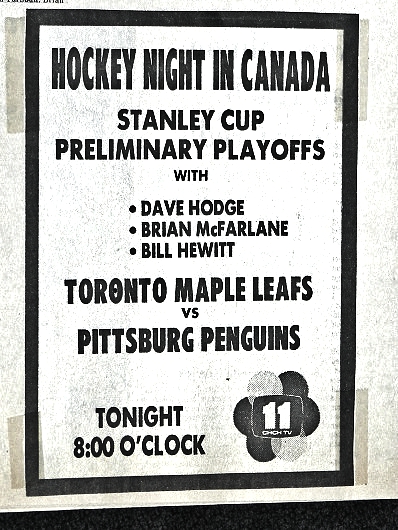
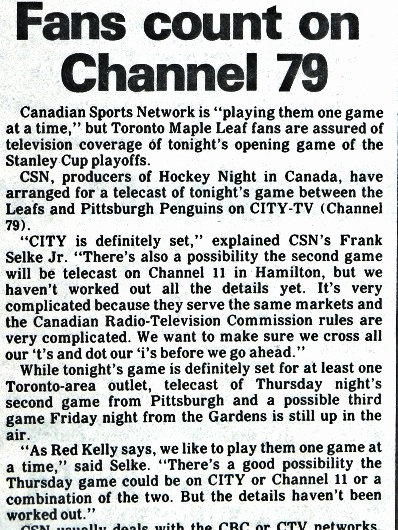
To indicate how times have changed, the Toronto affiliates of CBC and CTV both declined options to televise the Leafs–Penguins series (above). Instead, CITY–TV Channel 79 stepped up for Game 1 from Maple Leaf Gardens with Hamilton independent CHCH–TV Channel 11 electing to show Game 2 from the Pittsburgh Civic Arena. The regular Leafs telecast tandem of Bill Hewitt and Brian McFarlane called the play with Dave Hodge in the intermission studio. Though the Leafs had finished one point ahead of Pittsburgh (83–82), the Penguins were an explosive club; their 339 goals second only to Philadelphia in 1975–76. Three Pittsburgh forwards — Pierre Larouche (53 goals), Jean Pronovost (52 goals) and Syl Apps Jr. (99 points) — finished in the top ten among NHL scorers. Neither did the Leafs fare well against the Penguins in five regular–season match–ups, losing four, while getting hammered by scores of 8–4, 6–3 and 7–1. Toronto won the final meeting, 5–4, at home on Mar. 29 (the night of my surgery), just more than a week before the playoffs. The Leafs could also score… the forward unit of Darryl Sittler, Lanny McDonald and Errol Thompson combining for 121 goals and 273 points; Sittler becoming the first Toronto player to amass 100 points in a season.
The world was a vastly different place 44 years ago. For information, we had newspapers, television and radio. A multi–millionaire may own a car phone, but there was no Internet and nothing at all mobile with respect to communication. Doctors carried pagers, developed in the 1960’s, but these items did not become widely available until the 80’s. Here in Toronto, there were three daily newspapers: the Star, the Sun (founded only 4½ years earlier) and the Globe and Mail, Canada’s national broadsheet, which published local editions. Covering the Leafs in 1975–76 were Frank Orr (Star), John Iaboni (Sun) and Don Ramsay (Globe).
GAME 1: Maple Leaf Gardens — Apr. 6, 1976
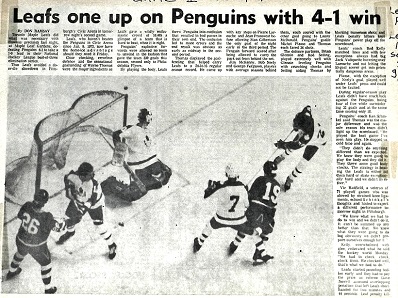

I was still recovering from abdominal surgery at Toronto General when the Leafs and Penguins faced off, three blocks east, in the best–of–three preliminary opener. My parents, Sandee and Irv, used our season tickets (bottom–right) at the Gardens. Toronto beat Pittsburgh, 4–1, in a thorough performance, the polar–opposite of sloppy outings against the Penguins during the regular season. Jim McKenny, Lanny McDonald and Bob Neely had the home side in front, 3–0, by 11:00 of the second period. Stan Gilbertson scored for Pittsburgh early in the third, but George Ferguson iced the win with less than five minutes to play.
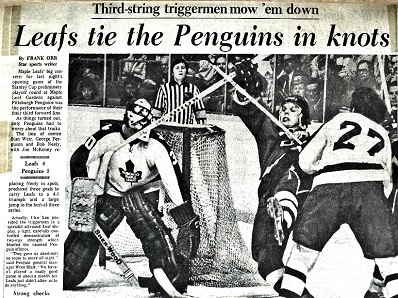
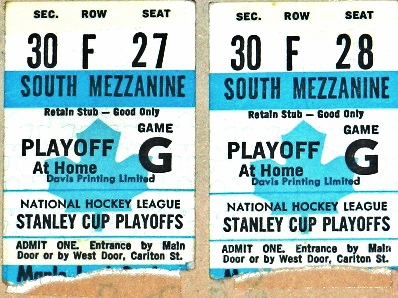
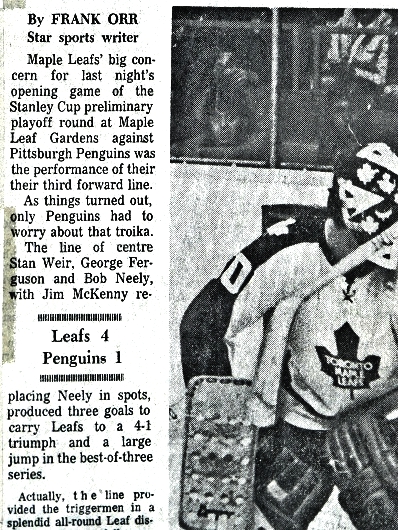
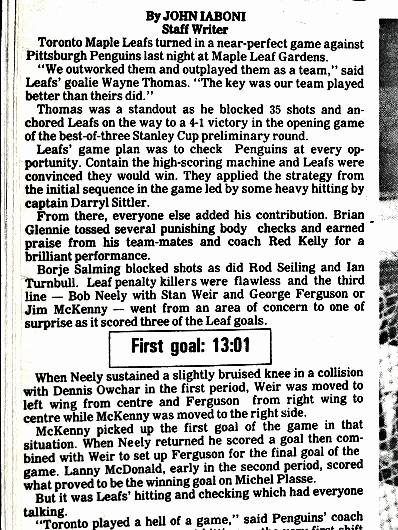
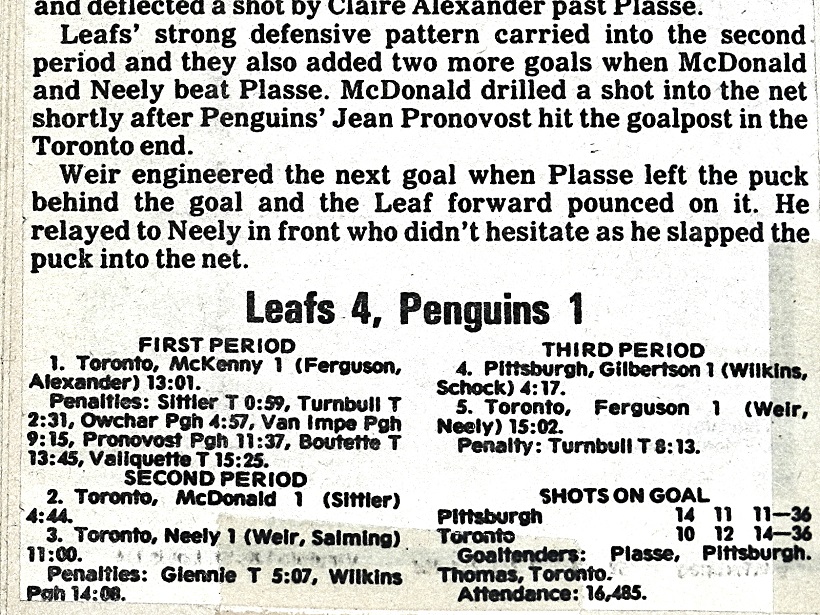
GAME 2 Preview, Toronto Sun:
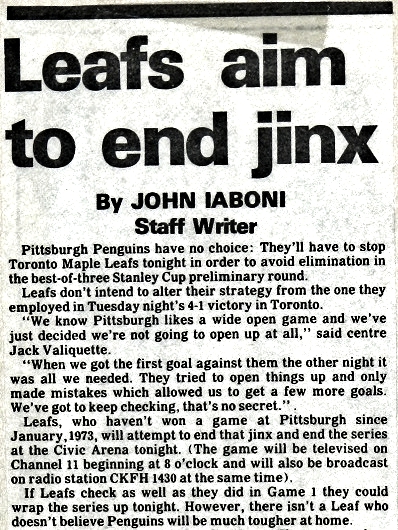
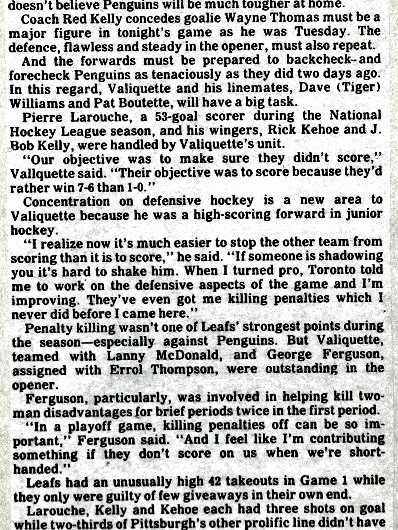
GAME 2: Pittsburgh Civic Arena — Apr. 8, 1976
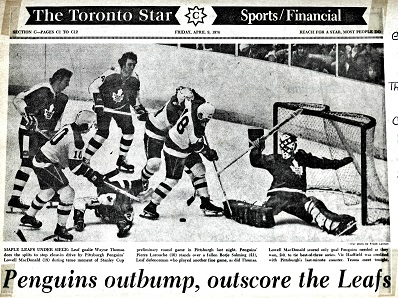
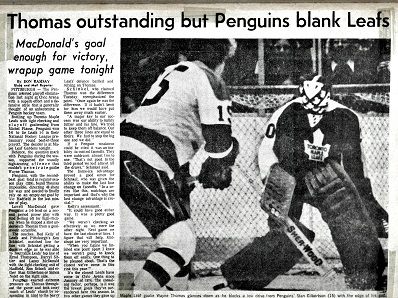
The Leafs could not score at the old Civic Arena and were unable to sweep the best–of–three round. Though Wayne Thomas performed superbly in goal for Toronto, stopping 47 shots, Pittsburgh prevailed, 2–0, to set up a decisive third match, the following night, at Maple Leaf Gardens. Lowell MacDonald beat Thomas just past the midway mark of the second period and Vic Hadfield wrapped up the triumph with an empty net goal in the final minute. Michel Plasse stopped 21 shots to record the victory in net for the Penguins.
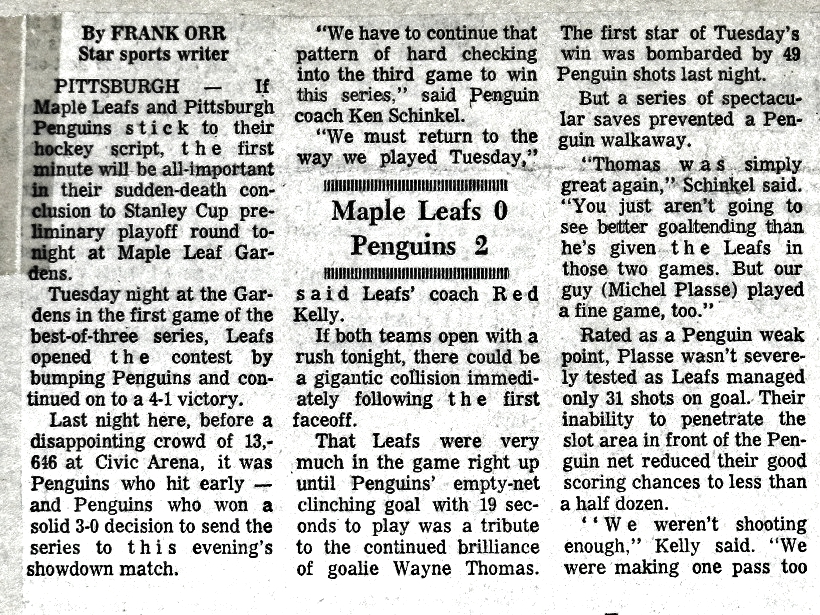
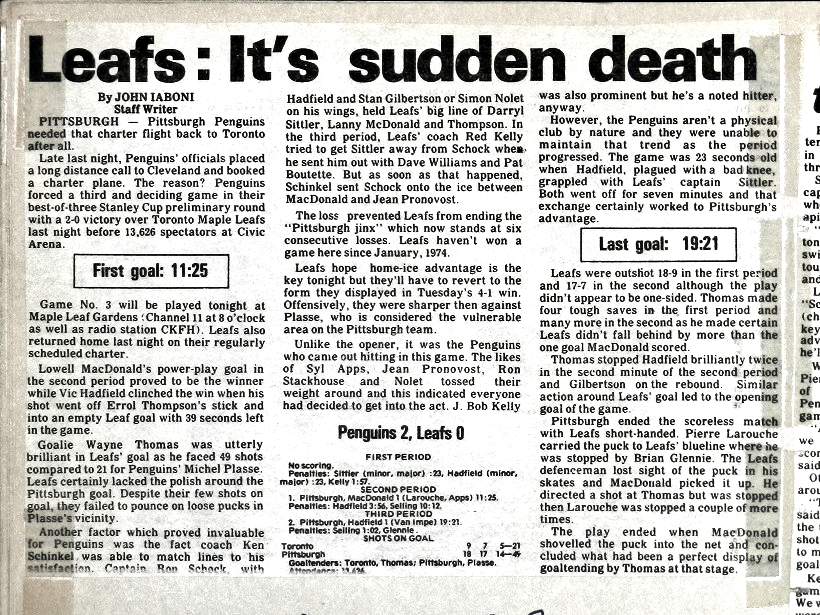
GAME 3: Maple Leaf Gardens — Apr. 9, 1976
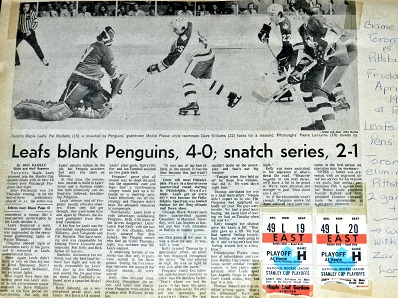
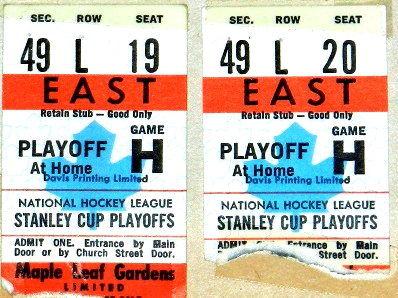
This was a joyous occasion for me; I remember it like yesterday. I had been released from hospital, Thursday morning, after 39 long days and I watched Game 2 on TV from the blissful comfort of home. Though still rather sore from having my belly sliced open 11 days earlier, I attended Game 3 at the Gardens, with Dad, in the seats (top–right) owned by his accounting firm — between center–ice and the blue line in the east Reds, halfway up from ice level; a superb location. The deciding match turned in Toronto’s favor, emotionally, upon killing off a five–minute major for high–sticfking assessed to Dave (Tiger) Williams by referee Ron Wicks just 1:50 after the opening face–off. The sell–out crowd at the Gardens stood and roared as Williams emerged from the penalty box. Jim McKenny’s goal, with three minutes left in the opening frame, was all the Leafs would require in a 4–0 victory. Pat Boutette and Borje Salming scored for Toronto prior to the midway mark of the second period and Lanny McDonald added some insurance with a blazing wrist–shot from the right–wing circle early in the third. Wayne Thomas was again busy between the pipes, stopping 36 Penguin shots and performing brilliantly during the five–minute disadvantage. It marked the first playoff–series win for the Maple Leafs on home ice since their Stanley Cup conquest — May 2, 1967 — over Montreal.
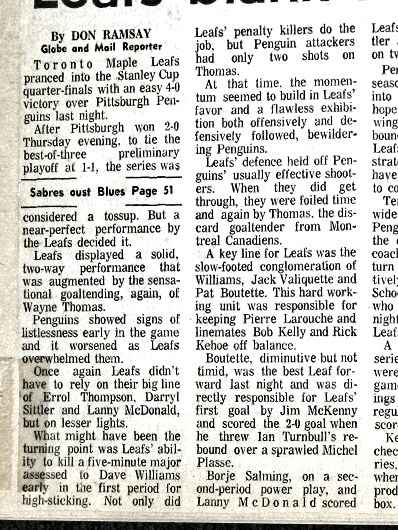
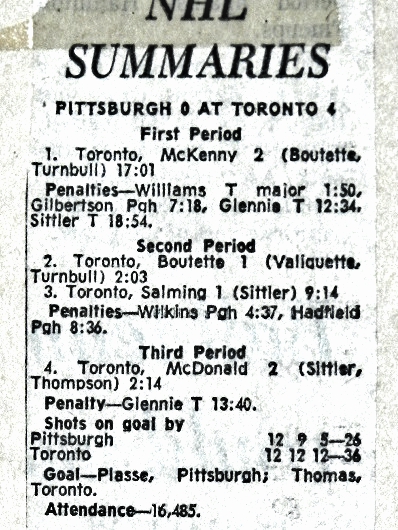
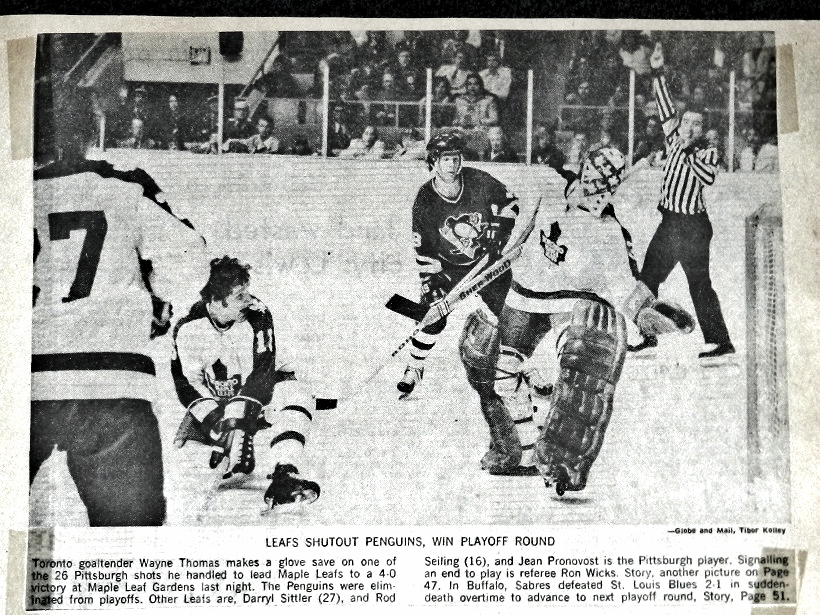
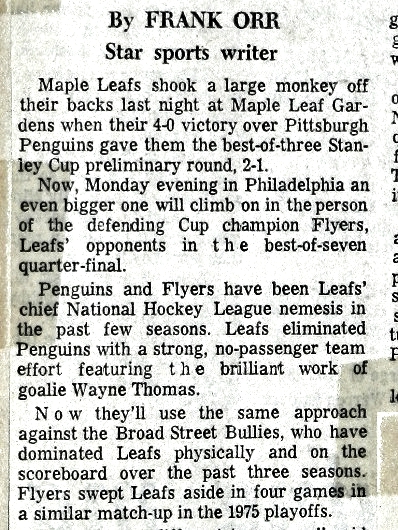
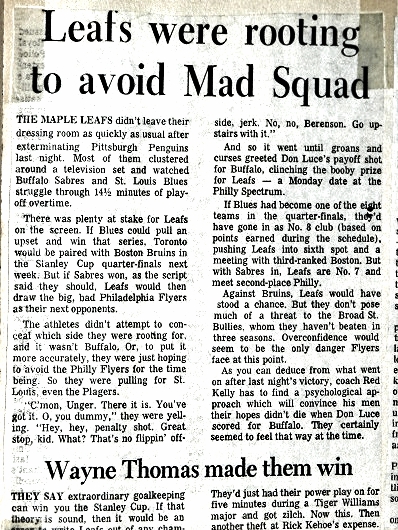
The Leafs moved on to play Philadelphia in the Stanley Cup quarterfinals. The Flyers had won the NHL title the previous two years and had easily swept Toronto from the quarterfinal round in 1975. This series, long–remembered by those who watched, was altogether different. Buoyed by the presence of Tiger Williams, Scott Garland and Kurt Walker, the Leafs pushed back against the Broad Street Bullies, extending Philadelphia to the full seven games before bowing out at the Spectrum. In Game 3, at the Gardens, a brawl erupted from which Ontario Attorney–General Roy McMurtry brought up three members of the Flyers (Joe Watson, Mel Bridgman, Don Saleski) on assault and weapons charges (all were acquitted). Something called Pyramid Power briefly reined here in town after coach Red Kelly had the Leaf players hold their sticks under a makeshift monolith in the dressing room prior to Game 6. Darryl Sittler went out and scored five goals on Bernie Parent (tying a Stanley Cup record) in an 8–5 win that extended the series to a decisive match.
Ultimately, the Flyers breezed to a 7–3 triumph, on home ice, in Game 7.
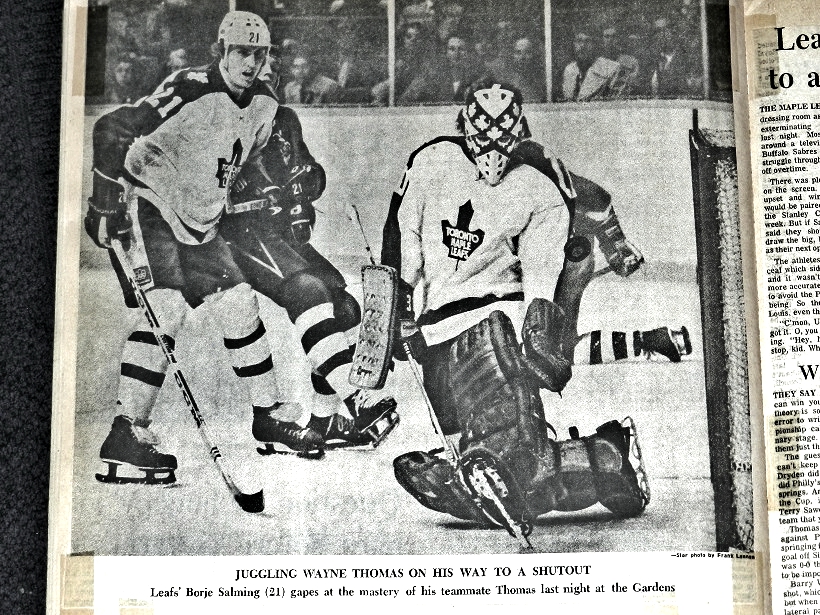
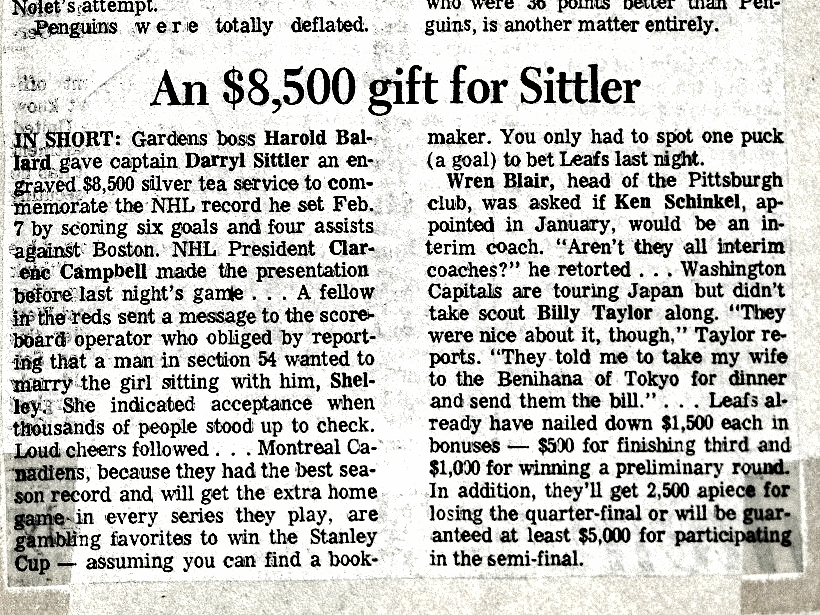
EMAIL: HOWARDLBERGER@GMAIL.COM

